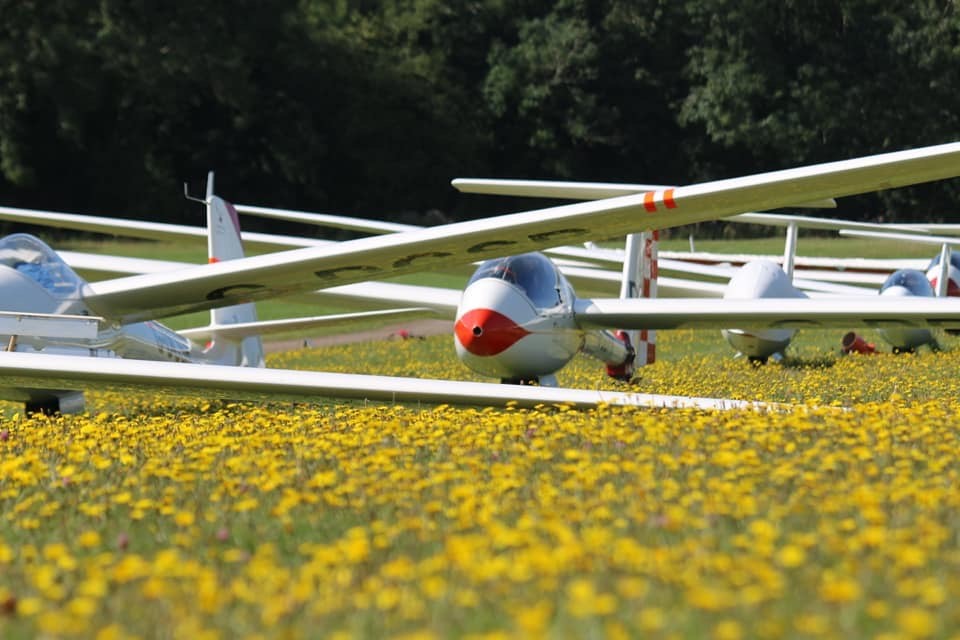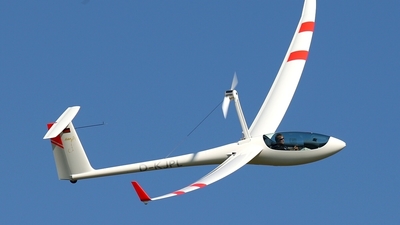BGA and the Environment
Gliding is an air sport where the fundamental aim is to fly without using any energy other than that generated by the sun and wind.
The British Gliding Association is an environmentally conscious organisation and recognises the view that there is a climate emergency. We acknowledge that to be sustainable, gliding needs to contribute to the balance between environmental, societal and economic interests. You can read the UK Government’s ‘Climate change explained’ here.
Europe Air Sports and its members, which includes UK air sport organisations such as the BGA, are committed to contributing to the decarbonisation objective of the European Green Deal. Innovation, fleet renewal, better access to simulators, a review of light aircraft certification standards, and relevant aspects of pilot training are the key enablers. You can read the EAS position paper ‘Flying for a better climate’ sheet here.
The FAI, the international body for all air sports including gliding, notes that ‘one of our aims is to find ways to reduce any negative effects air sports have on people, wildlife and the world itself, while protecting the right of aviation enthusiasts and fans to continue enjoying their chosen disciplines’. You can read more here.
There are specific issues that everyone can help with now:
– learn about reducing plastic waste in sport
– understand how a club or organisation can become more environmentally sustainable
Gliding Clubs
Gliding is delivered by BGA member gliding clubs that are operated independently, ie with their own governance and management systems that are informed by BGA operational regulations, policies, guidance and good practice.
Approximately 250,000 glider flights take place each year from the 80 gliding clubs around the UK. 70% of the annual total of glider launches are delivered through ground-based winch launching which is increasingly fuelled by LPG (which has a low fuel emission rate). Towing aircraft are used primarily where winch launching would be unsuitable for operational and safety reasons. Older towing aircraft are progressively being phased out and replaced with modern, quieter and more efficient towing aircraft. The number of electrically powered self-launching or sustainer equipped gliders is increasing year on year (currently around 2% of the total). You can read more about the electric motor technology used in gliders here. A winch launch typically consumes a litre of LPG, an aerotow typically consumes between three and five litres of petrol depending on the aeroplane type.
The gliders that have been launched will typically remain airborne for hours using the sky’s natural energy whilst of course using no fuel with zero emissions.
Several gliding club ground facilities are entirely powered by solar and wind energy.
The BGA is committed to encouraging and supporting gliding clubs to be environmentally conscious, to acknowledge the potential impact that their operation may have on the environment, and to operate in so far as reasonably possible aligned with its environmental commitment.
The BGA encourages Government, regulators and industry to support the development of innovation that will support affordable, zero emission recreational air sport.
BGA Commitment
As an organisation that aims to minimise the environmental impact of supplying its services, the BGA:
complies with all environmental legislation, codes of practice and guidance produced by regulatory bodies where these are applicable and relate to the identified environmental aspects;
while operating from an energy efficient building, seeks to reduce its energy consumption year on year
will continue to minimise business/organisation travel;
strives to integrate environmental good practice into its business operations;
prevents avoidable pollution;
minimises waste to landfill by reducing waste generation and by segregating and recycling waste where it is economically and operationally feasible;
and uses energy, water, materials, and other natural resources as efficiently as possible, giving regard to the long-term sustainability of consumable items.
Awareness
Our commitment is communicated to all BGA staff, volunteers and BGA member gliding clubs, who are expected to co-operate and assist whilst ensuring that their own activity, so far as is reasonably practicable, is undertaken with due consideration to the risk to themselves, others, and the environment.
The Future?
The UK government has a future target of net zero emissions. Aviation has its part to play. Commercial air transport (airlines) and business jet operations have a high environmental impact.
Gliding is an air sport that represents a low impact on the environment. Increasing numbers of electrically powered gliders, more efficient aerotowing aircraft and use of LPG in winch launching are all currently contributing to a long-term net reduction in emissions by the sport.
During 2020, the first flight by a hydrogen fuelled light aeroplane took place in the UK. We look forward to seeing this technology evolve as an affordable glider launching option. The European Gliding Union, which includes the BGA, supports a project to deliver open-source guidance on building electrically powered launching winches. During 2022, Skylaunch Ltd successfully tested an electric powered glider launching winch in the UK.
Gliding clubs may be able to do more to support sustainability through nationally and locally supported initiatives. There are links to information here.
Offsetting
Whilst reducing emissions is ideal, ‘offsetting’, ie compensating for carbon dioxide emissions by participating in schemes designed to make equivalent reductions of carbon dioxide in the atmosphere, is an option.
The cost of carbon offsetting varies greatly depending on the scheme used. There is plenty of advice on the types of project that a pilot might support, including for example at www.ethicalconsumer.org. One company, Carbon Footprint, offers a range of schemes and provides a certificate to confirm the detail. Other companies and schemes are available.
Recreational GA pays around 50% of the cost of the fuel it uses as tax, which should be contributing to green initiatives in support of zero carbon. In comparison, commercial air transport pays no tax on the cost of fuel used.
Images: Top – Gliders waiting to Launch. Centre: An electrically powered self-launch glider and offshore electrical power generation. Lower – Airfield boundary at the Scottish Gliding Centre



